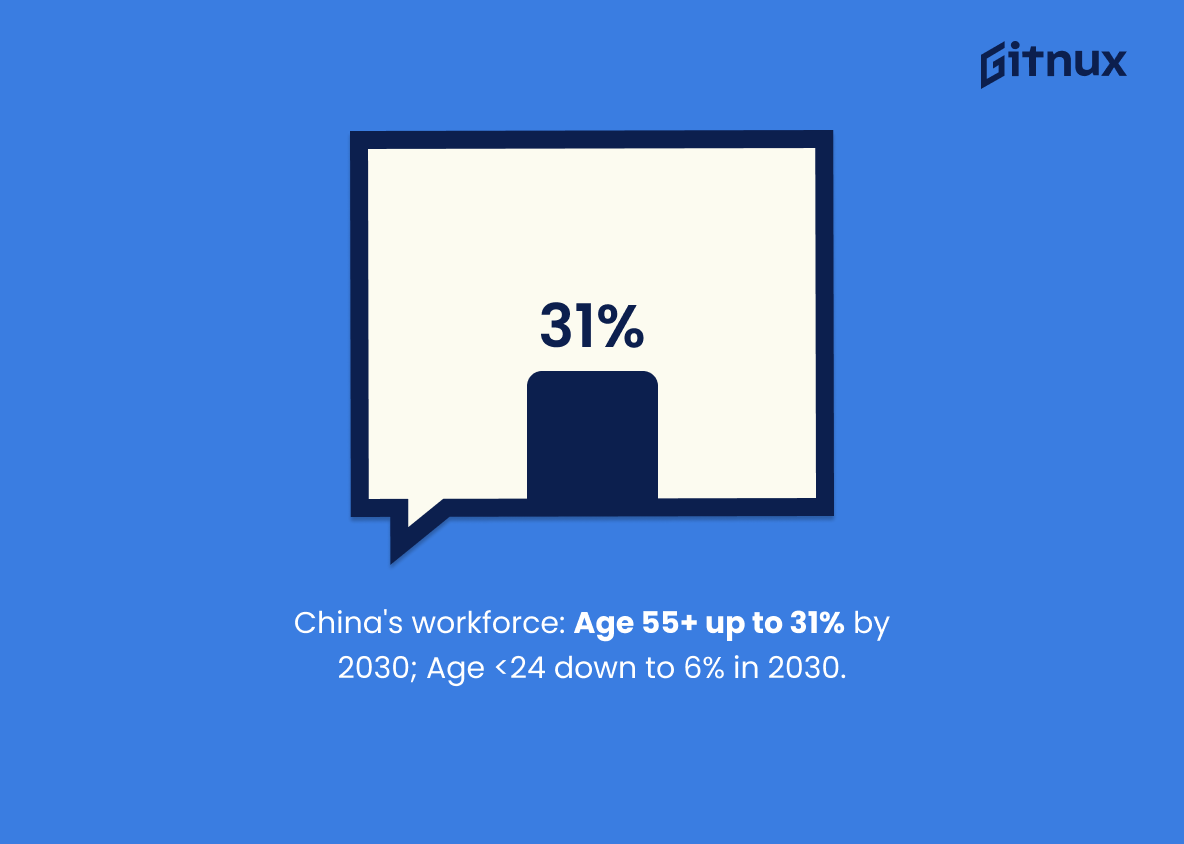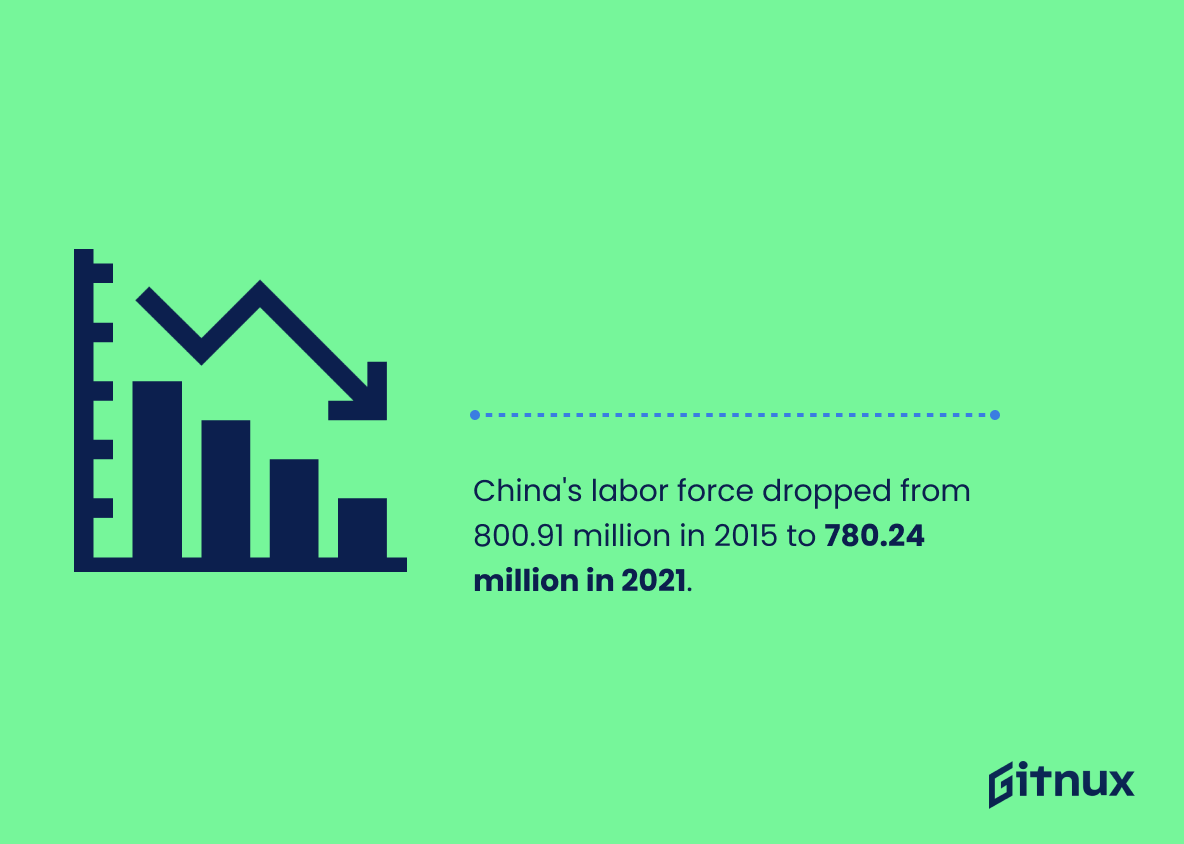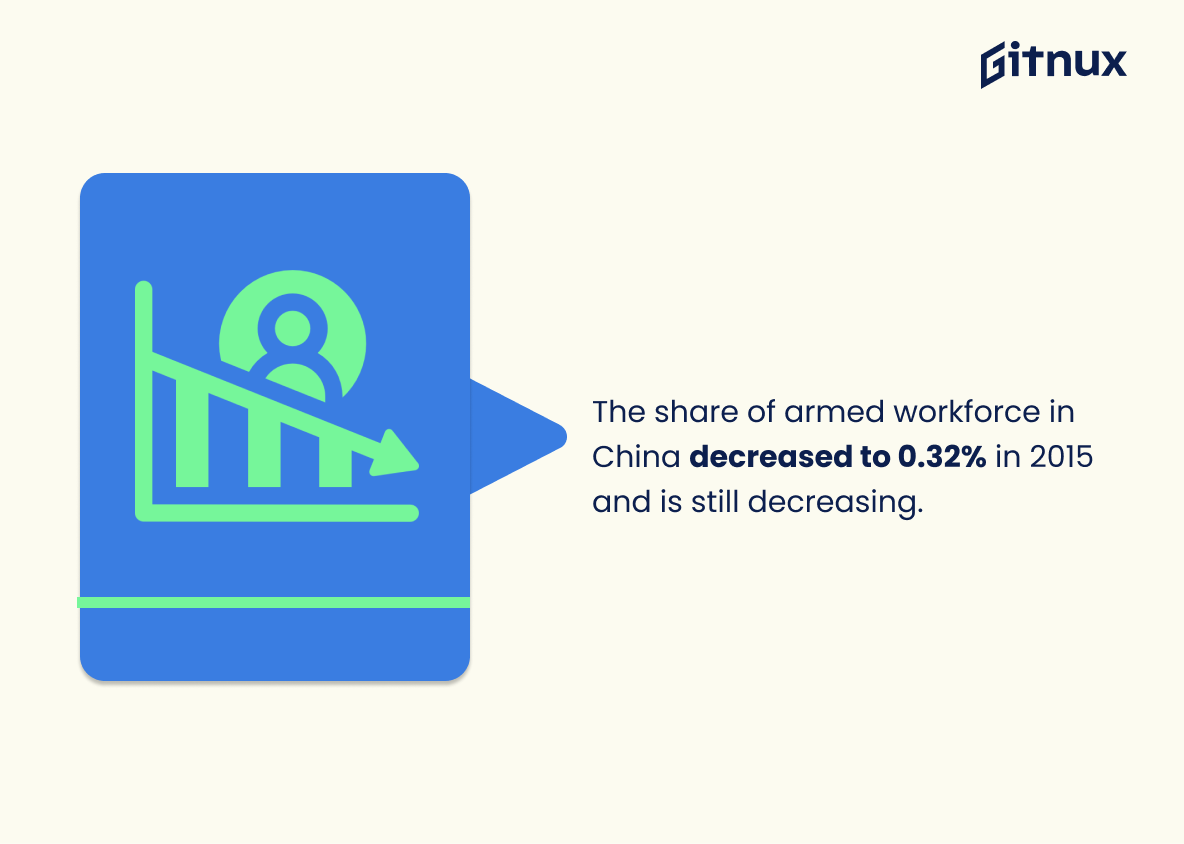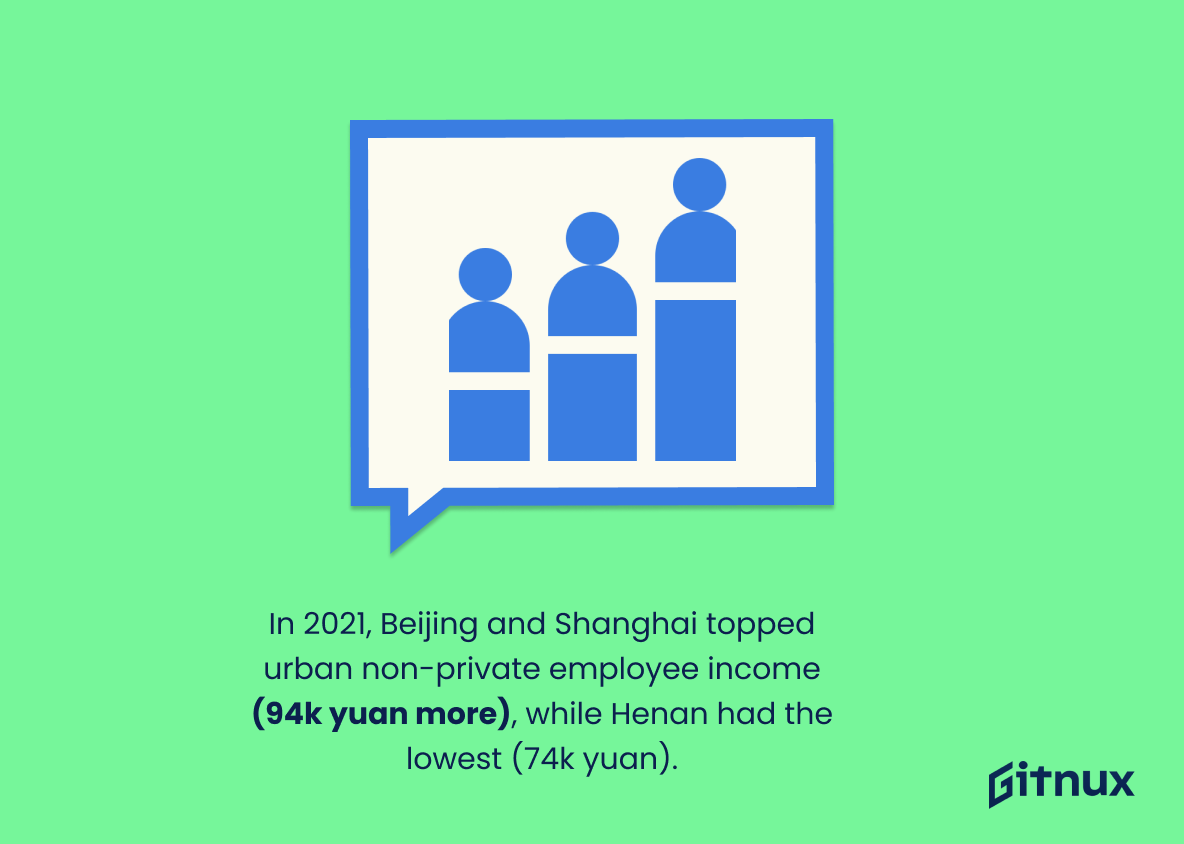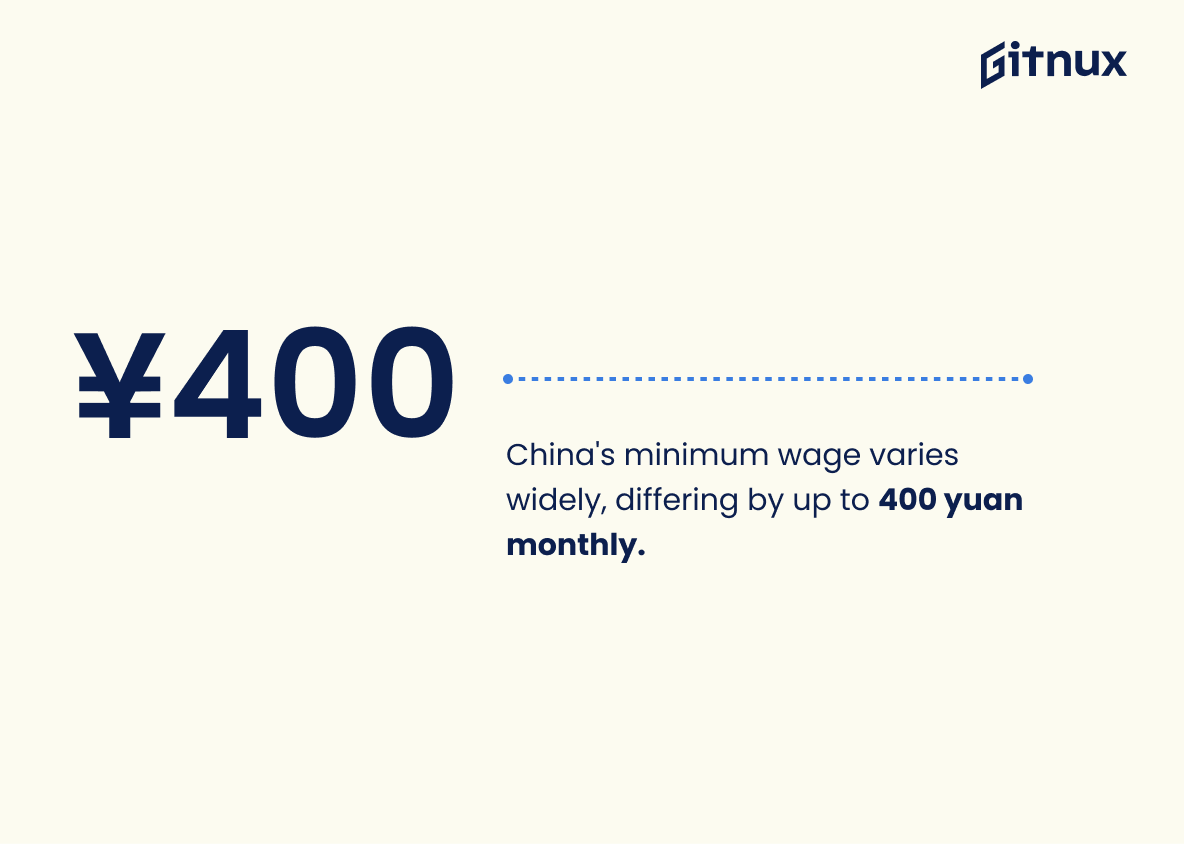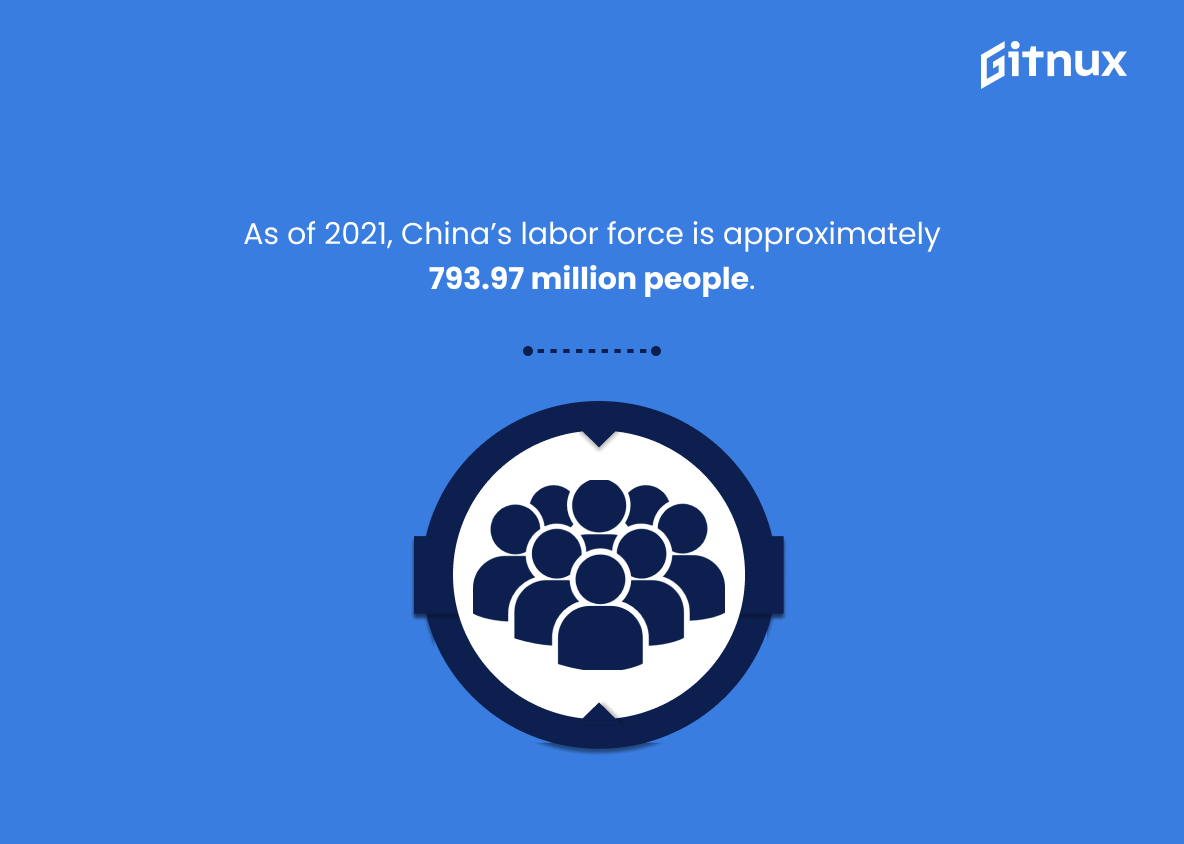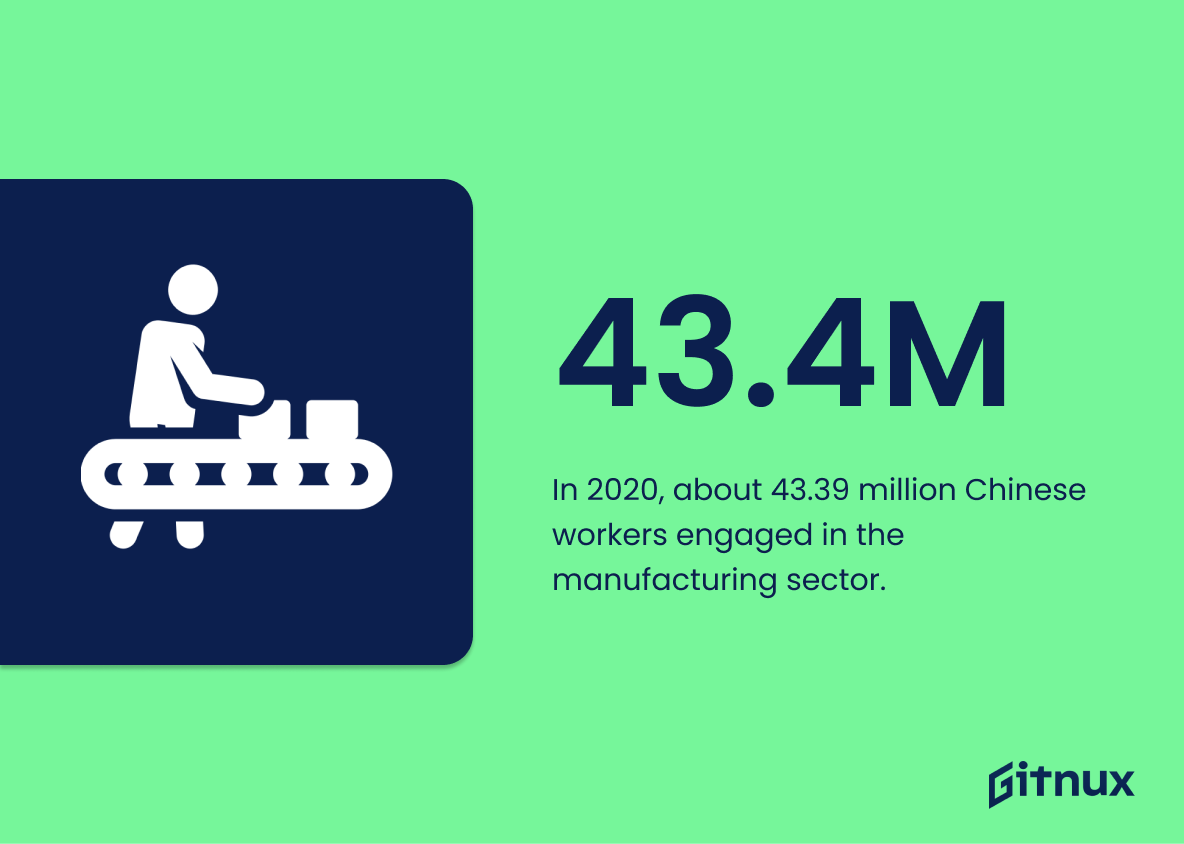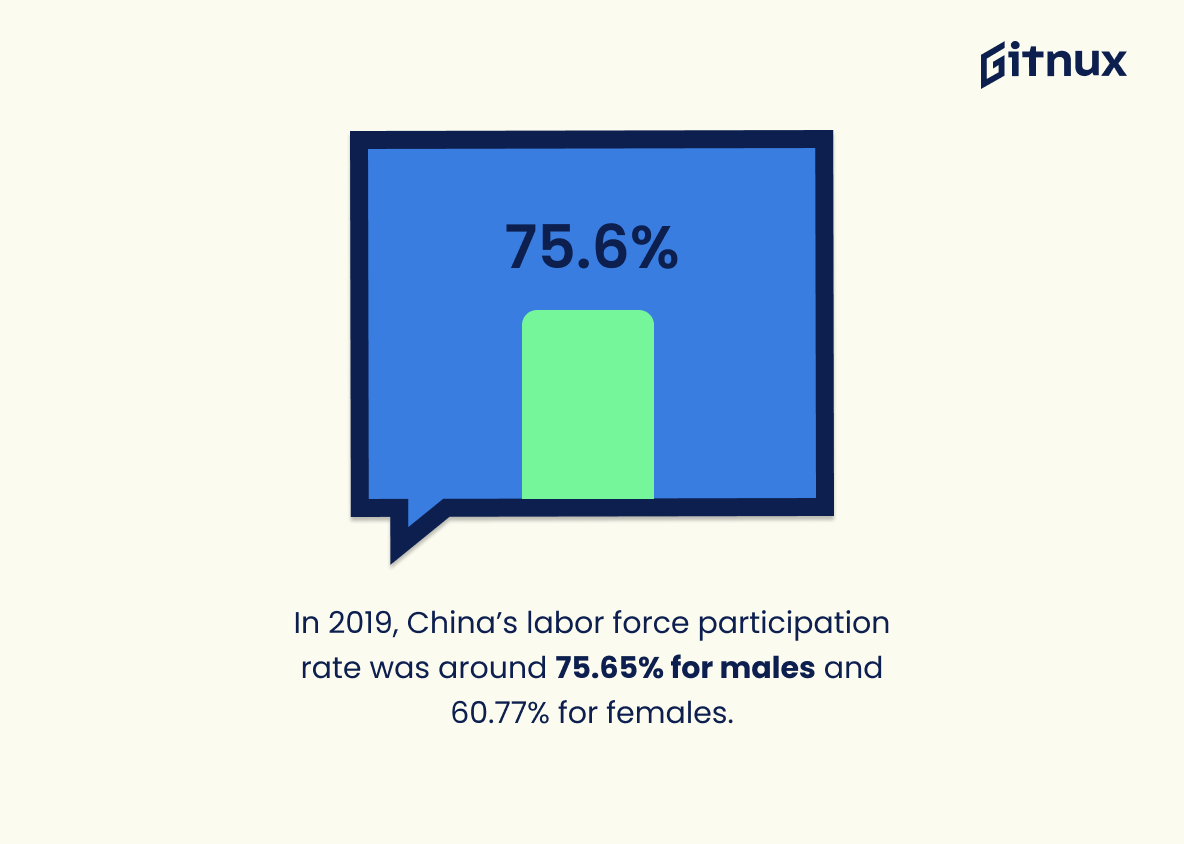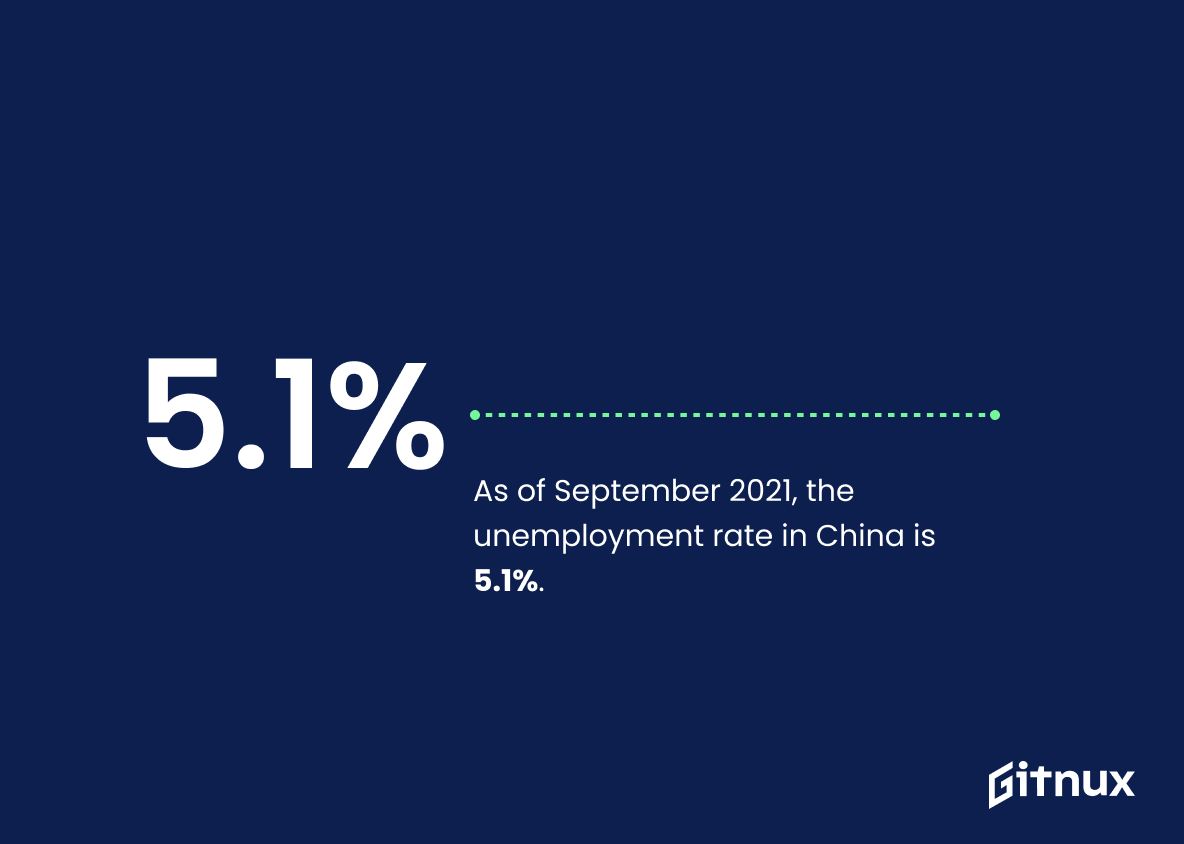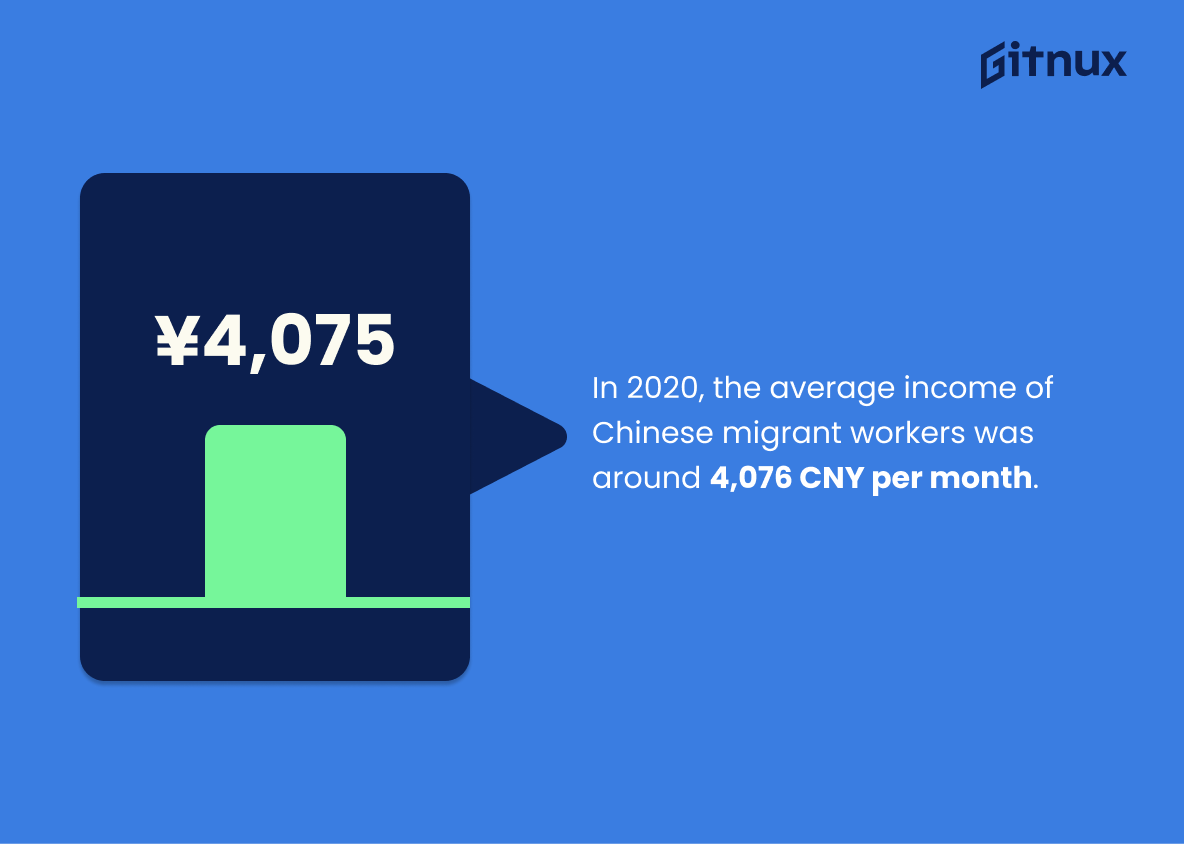China is a country of immense economic power, and its labor force is a major contributor to its success. In this blog post, we will explore the statistics of China’s labor force and discuss how it has changed over the years.
We will look at the size and composition of the labor force, the wages and benefits of Chinese workers, and the impact of labor force changes on the Chinese economy. Finally, we will examine the implications of these changes for the global economy. By the end of this post, you will have a better understanding of the Chinese labor force and its importance to the world.
China’s Laborforce: The Most Important Statistics
China’s labor force has decreased since 2015, from 800.91 million people in 2015 to 780.24 million people in 2021.
The average annual income of employees working for urban non-private units in China in 2021 is highest in Beijing and Shanghai (94k yuan more than the average) and lowest in Henan (74k yuan).
China’s Laborforce Statistics Overview
The number of people in the primary and secondary industries is slowly declining while the number of people in the tertiary industry is gradually increasing.
The Chinese economy is transitioning from a manufacturing-based economy to a service-based economy, which could have implications for the future of the Chinese labor market.
The labor force participation rate of people over the age of 55 in China has increased from 8% in 1980 to 31% in 2030, while the labor force participation rate of people under the age of 24 is expected to drop to 6% in 2030.
This shows that the Chinese labor force is aging, and the share of labor participation by the group under the age of 24 is decreasing. This could have a significant impact on the Chinese economy, as the older population may not be able to keep up with the demands of the labor market.
China’s labor force has decreased since 2015, from 800.91 million people in 2015 to 780.24 million people in 2021.
It proves that the labor force in China is decreasing, which could have a negative impact on the economy and the overall labor market. This could lead to a decrease in productivity, wages, and employment opportunities.
The share of armed workforce in China decreased to 0.32% in 2015 and is still decreasing.
Thus, it is becoming increasingly civilian-based, which could lead to a more productive and efficient economy.
The registered unemployment rate in urban China decreased until 2019, but rose to 4.24% in 2020. It is expected to decrease to 3.6% by 2027.
In 2014, unemployment insurance income was greater than expenditure, however, this reversed in 2019 and unemployment insurance expenditure has since been higher than income.
This suggests that the number of people claiming unemployment insurance has increased significantly since 2019, likely due to a decrease in the number of jobs available.
This could indicate a weakening of the labor market in China, which could have a significant impact on the economy.
The average annual income of employees working for urban non-private units in China in 2021 is highest in Beijing and Shanghai (94k yuan more than the average) and lowest in Henan (74k yuan).
There are large income gaps between regions and industries, with IT sector employees earning 201,500 yuan on average and agricultural sector employees earning 53,800 yuan on average. This highlights the disparities between different regions and industries in terms of income, and can be used to inform policy decisions to ensure that all workers in China are receiving fair wages.
The minimum wage in China varies greatly between provinces and districts, with a difference of up to 400 yuan per month.
Migrant workers in China have been increasing since 2012 and in 2021, they accounted for more than 20% of the total population. Thus, there is an imbalanced development among areas in China and the flow of migrant workers mainly going to manufacturing industries.
5.1% of migrant workers from East China have left their home province to work in another province, whereas workers in the Central region are more likely to leave their home province.
It suggests that workers in the East are more likely to stay in their home province, while workers in the Central region are more likely to leave their home province to work in another. This could have implications for the labor market in China, as it could lead to regional disparities in wages and job opportunities.
As of 2021, China’s labor force is approximately 793.97 million people.
It is a key factor in understanding the economic and social dynamics of the country, and provides a valuable insight into the country’s capacity to produce goods and services. As such, it is an essential piece of information for any blog post about China’s labor force statistics.
In 2020, about 43.39 million Chinese workers engaged in the manufacturing sector.
This highlights the importance of the manufacturing sector to the Chinese economy and the reliance of millions of Chinese workers on it for their livelihoods. It also serves as a reminder of the immense potential of the Chinese labor force and the need to ensure that these workers are provided with safe and fair working conditions.
In 2019, China’s labor force participation rate was around 75.65% for males and 60.77% for females.
This highlights the fact that while males are more likely to be employed, females are significantly underrepresented in the workforce. This is an important factor to consider when discussing China’s labor force statistics, as it sheds light on the unequal opportunities available to men and women in the country.
As of September 2021, the unemployment rate in China is 5.1%.
The unemployment rate of 5.1% in China as of September 2021 is a telling statistic that speaks volumes about the state of the Chinese labor force. It provides insight into the current economic climate and the overall health of the workforce, giving readers a better understanding of the labor market in China. This statistic is an important indicator of the country’s economic stability and can be used to gauge the success of labor policies and initiatives.
In 2020, the average income of Chinese migrant workers was around 4,076 CNY per month.
This is an important piece of information to consider when discussing the labor force in China, as it paints a picture of the economic realities of the country’s working population.
China’s retirement age for men is 60 years and for women, it’s 55 years (50 for blue-collar jobs).
Women are expected to retire earlier than men, even in blue-collar jobs, and that this discrepancy is not only accepted but also institutionalized. This is an important point to consider when discussing China’s labor force statistics, as it reveals the unequal treatment of women in the workforce.
In 2020, the agriculture sector employed around 27.5% of China’s labor force.
A significant portion of the country’s workforce is employed in the agricultural sector, which is a major contributor to the country’s economy. This statistic is important to consider when discussing China’s labor force statistics, as it provides insight into the country’s reliance on the agricultural sector for employment.
As of 2021, the minimum wage in China varies between 1,530 CNY (Shanghai) and 1,210 CNY (Guangxi Zhuang), depending on the region.
Wages can vary significantly depending on where a person lives, and can have a major impact on their quality of life. This is an important factor to consider when discussing China’s labor force statistics, as it can provide insight into the economic disparities between different parts of the country.
In 2019, the total annual number of hours worked in China was 46.3 billion hours.
This is a testament to the hardworking nature of the Chinese people and the dedication they have to their jobs. It also serves as a reminder of the importance of the labor force in China and the impact it has on the country’s economy.
As of 2019, the Chinese labor market has a youth unemployment rate of 11.6%.
This is a key indicator of the overall health of the labor market, and provides insight into the challenges that the Chinese labor force is facing. As such, it is an important statistic to consider when discussing China’s laborforce statistics.
In 2018, the total number of employment in renewable energy sector in China was approximately 4.1 million.
This demonstrates that the Chinese government is taking steps to reduce its reliance on fossil fuels and is investing in renewable energy sources. This shift in focus is likely to have a positive impact on the environment, as well as the economy, as more jobs are created in the renewable energy sector. Additionally, this statistic is a testament to the Chinese government’s commitment to creating a more sustainable future.
In 2018, approximately 99 million people were working in the services sector in China.
This highlights the importance of the services sector in providing employment opportunities to millions of people in China, and its significance in the overall labor force. Furthermore, it serves as a reminder of the need for China to continue to invest in the services sector in order to ensure that it remains a major source of employment for its citizens.
As of 2019, the gender pay gap in China was approximately 20%.
Women in China are still not receiving the same pay as their male counterparts, despite the fact that they are doing the same work. This inequality has a significant impact on the economic well-being of women in China, and it is an issue that needs to be addressed in order to ensure that all members of the labor force are treated fairly and equally.
In 2020, 5.5% of the employed population in China were part of labor unions.
This provides insight into the level of representation and protection that workers in China have access to, and can be used to gauge the effectiveness of labor unions in the country. It is an important factor to consider when discussing the laborforce in China, as it can help to inform the overall picture of the labor market in the country.
In 2017, around 67.6% of China’s urban labor force was engaged in non-public sectors.
A majority of the urban labor force is now engaged in non-public sectors, which is a significant shift from the traditional reliance on public sector employment. This shift has implications for the Chinese economy, as it suggests that the labor force is becoming more diverse and dynamic. It also has implications for the Chinese government, as it may need to adjust its policies to accommodate the changing labor force. As such, this statistic is an important piece of the puzzle when it comes to understanding the current state of China’s labor force.
In 2020, the construction sector employed about 13.4% of China’s labor force.
The construction sector is a major contributor to the country’s economy, providing employment opportunities for a significant portion of the population. This is especially relevant in the context of a blog post about China’s labor force statistics, as it provides a valuable insight into the country’s economic structure and the role of the construction sector in it.
In 2019, the urban working population in China reached approximately 446.68 million.
This highlights the immense potential of the Chinese economy, as well as the potential for growth and development. It also speaks to the importance of the urban working population in China, and the need for policies and initiatives that can help to ensure that this population is able to thrive and contribute to the country’s economic success.
Conclusion
In conclusion, the labor force in China is a rapidly growing and changing sector of the economy. With the rise of the middle class, the number of people in the labor force is expected to continue to grow in the coming years.
As the Chinese economy continues to expand, the labor force will be a major factor in the country’s economic success. With the right policies and investments, the Chinese labor force can continue to be a major contributor to the country’s economic growth.
References
1 – https://www.statista.com/statistics/278346/economic-sector-distribution-of-the-workforce-in-china/?locale=en
2 – https://www.statista.com/statistics/239350/age-structure-of-the-workforce-in-china/?locale=en
3 – https://www.statista.com/statistics/282134/china-labor-force/?locale=en
4 – https://www.statista.com/statistics/239336/share-of-army-members-in-employed-people-in-china/?locale=en
5 – https://www.statista.com/statistics/270320/unemployment-rate-in-china/
6 – https://www.statista.com/statistics/225484/revenue-and-expenditure-in-the-unemployment-insurance-sector-in-china/
7 – https://www.statista.com/statistics/278350/average-annual-salary-of-an-employee-in-china-by-region/
8 – https://www.statista.com/statistics/233839/monthly-minimum-wage-in-china-by-city-and-province/
9 – https://www.statista.com/statistics/234578/share-of-migrant-workers-in-china-by-age/
10 – https://www.statista.com/statistics/234613/regional-distribution-of-migrant-workers-in-china-by-place-of-origin/
11 – https://www.statista.com
12 – https://china.usc.edu
13 – https://china-trade-research.hktdc.com
14 – https://irena.org
15 – https://data.worldbank.org
16 – https://www.ilo.org
17 – https://worldpopulationreview.com
18 – https://www.china-briefing.com

